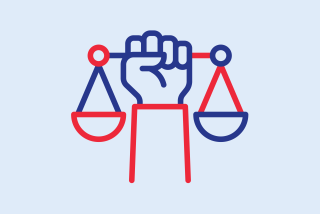1,020 Executive Panels Offer Lots of Advice--and It’s Not Free
- Share via
WASHINGTON — Quickly, now: If all the members of all the committees in Washington reclined end-to-end on a line due east of the Capitol, would they reach (a) Annapolis, Md., or (b) a conclusion?
Fact is, you needn’t bother the committees of Congress, the judicial committees, or any of the myriad non-governmental panels in town to build a human sidewalk to the Naval Academy. The executive branch would do nicely for that 25-mile stretch.
The committees of Congress make more day-to-day headlines, but they are vastly outmanned, and some say outgunned, by those in the Administration.
Don’t believe it? According to the President’s 17th Annual Report on Federal Advisory Committees, during fiscal 1988 alone, “58 federal departments and agencies sponsored 1,020 advisory committees, a 17.3% increase compared with the number of groups in existence during fiscal year 1987. A total of 21,236 individuals served as committee members, 3,516 meetings were held and 996 reports were issued.”
According to the General Services Administration, the taxpayers spent $110 million last fiscal year to support the executive branch’s advisory panels.
Thirty-four years ago, British poet Geoffrey Parsons wrote a little poem about this sort of thing in Punch magazine:
If you’re pestered by critics and hounded by faction
To take some precipitate, positive action
The proper procedure, to take my advice, is
‘Appoint a commission and stave off the crisis.”
Over the last decade, as documented in a report by attorneys Patti A. Goldman and Eric R. Glitzenstein of the consumers group Public Citizen, federal advisory committees have become an integral part of the Administration’s decision-making in both foreign and domestic policy. Indeed, in recent years hardly any significant policy issue has escaped referral to some “blue-ribbon” outfit, whether permanent or temporary, for months, often more, of study.
There have been commissions on ethics in government, on pay raises for members of Congress and federal judges, acid rain, apartheid in South Africa, the Iran-Contra affair, pornography, the MX missile, the Challenger disaster, the Strategic Defense Initiative, the federal deficit, food and drug safety and the AIDs epidemic, just to name a few.
It’s enough to make some people wonder what all those super-bureaucrats, the Cabinet secretaries and White House advisers, agency directors and regulatory commissioners, are being paid for. And this, from successive Administrations that would streamline government.
The public hears about the glamour commissions, such as John Tower’s Iran-Contra investigation, but most of them operate deep within the bureaucracy, far from the public eye. But they, too, can exert enormous influence on government policy. Public Citizen notes there are more than 200 peer review committees, for example, operated by agencies such as the National Science Foundation, the National Institutes of Health and the National Endowment for the Arts. They virtually decide which scientific and artistic projects the government will finance.
In some cases, members of advisory committees may have direct ties to private interests that stand to gain--or lose--from their recommendations. In some cases, too, those people aren’t required to reveal their industry or other special-interest links.
That is what most bothers Public Citizen and other consumer organizations that have attempted to monitor the behind-the-scenes roles of advisory panels and have tried, with little success, to challenge the makeup of some of them in court. Some members of Congress are starting to take a hard look at the issue as well.
Among the cases recently brought to light:
* Seven of the eight members of the scientific advisory panel charged with reviewing pesticide issues for the Environmental Protection Agency during the Ronald Reagan Administration were consultants for the chemical industry, including companies that produce pesticides. In one instance, the panel persuaded the EPA to hold off for years after the agency itself concluded that the pesticide Alar, used on apples, should be banned because it is a “probable” cause of cancer in humans and a “known” cause of cancer in laboratory animals. Alar’s manufacturer, Uniroyal Chemical Co., voluntarily took the compound off the domestic market earlier this year. EPA now says it will formally announce a ban in January.
* Each of the 10 non-governmental members of a particular Agriculture Department committee created in 1987 to develop regulatory policy on the contamination of food by microbiological agents such as salmonella and botulism was an employee, contractor or consultant of the food industry. Such contaminants cause more than 7,000 deaths and 6 million illnesses each year. The Agriculture Department argued in court that the one-sided composition of the panel did not violate a federal law calling for balanced representation, but in recent months has added several members from outside the industry.
* A motor vehicle safety panel established in 1987 by the National Highway Traffic Safety Administration to help “formulate the motor vehicle safety research agenda for the next decade” was stacked with employees and others with financial ties to the auto industry, and not one representative of consumer groups was appointed.
In enacting the Federal Advisory Committee Act in 1972, Congress recognized that such panels can be “a useful and beneficial means of furnishing expert advice, ideas, and diverse opinions to the federal government.” But then-Sen. Charles Percy (R-Ill.), a sponsor of that law, also summarized the dangers:
“Viewed in its worst light, the federal advisory committee can be a convenient nesting place for special interests seeking to change or preserve a policy for their own ends. Such committees, stacked with giants in their respective fields, can overwhelm a federal decision-maker, or at least make him wary of upsetting the status quo.”
More to Read
Get the L.A. Times Politics newsletter
Deeply reported insights into legislation, politics and policy from Sacramento, Washington and beyond. In your inbox twice per week.
You may occasionally receive promotional content from the Los Angeles Times.










